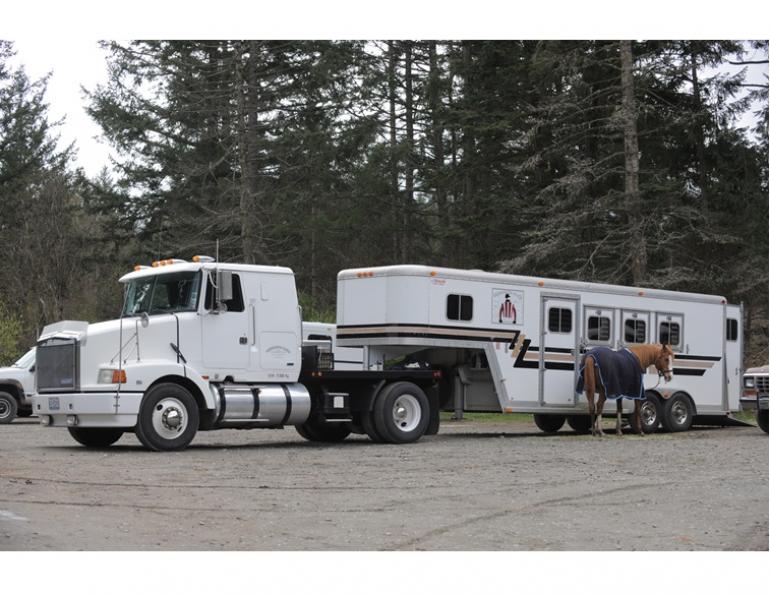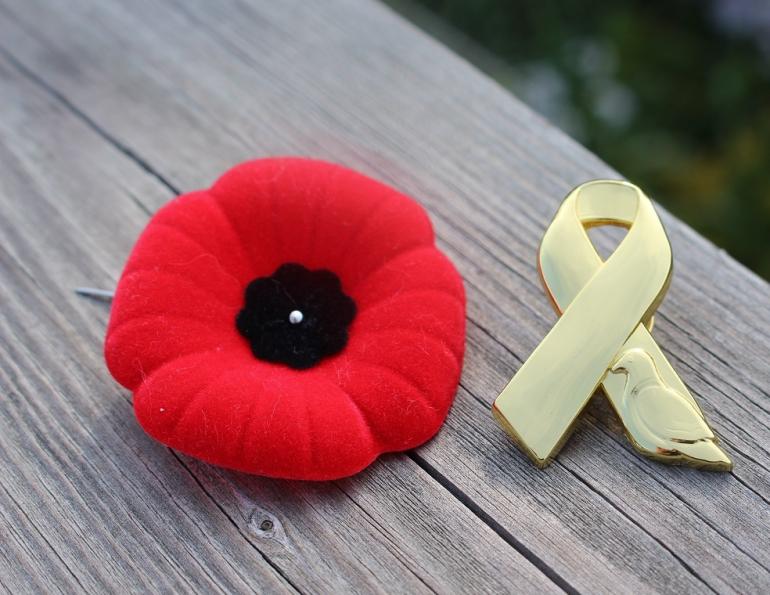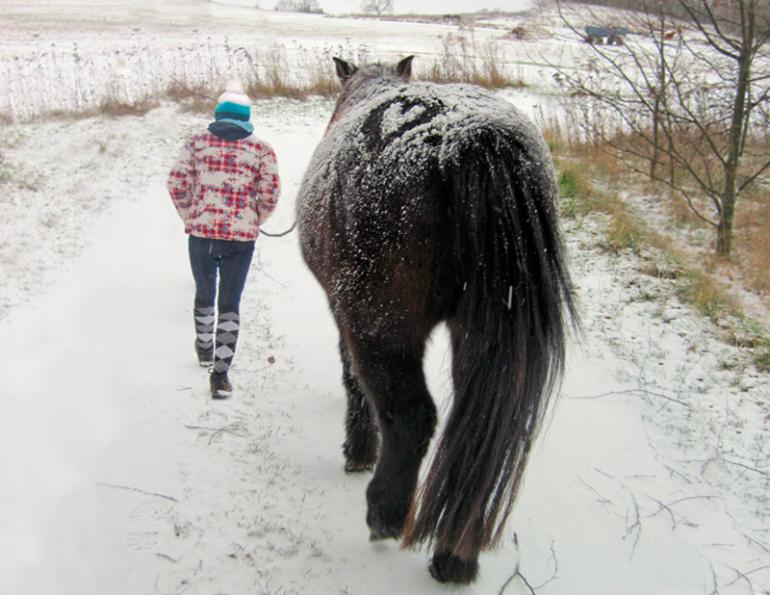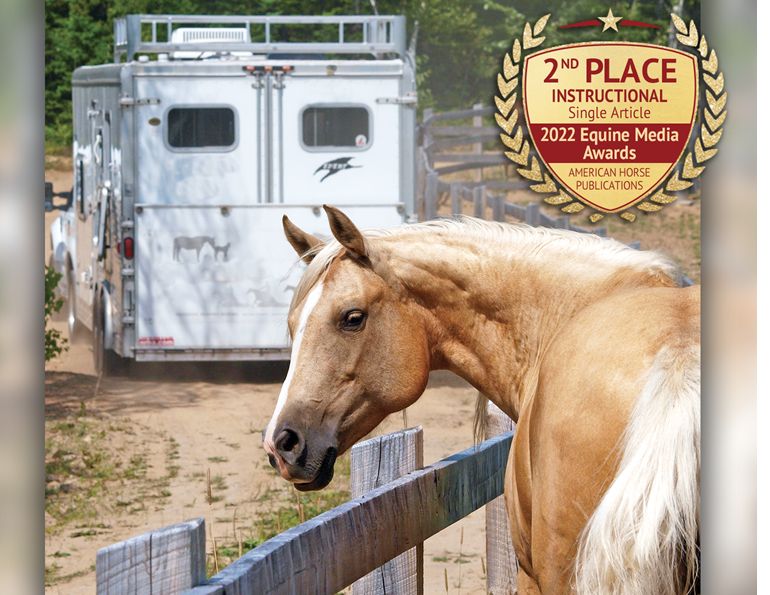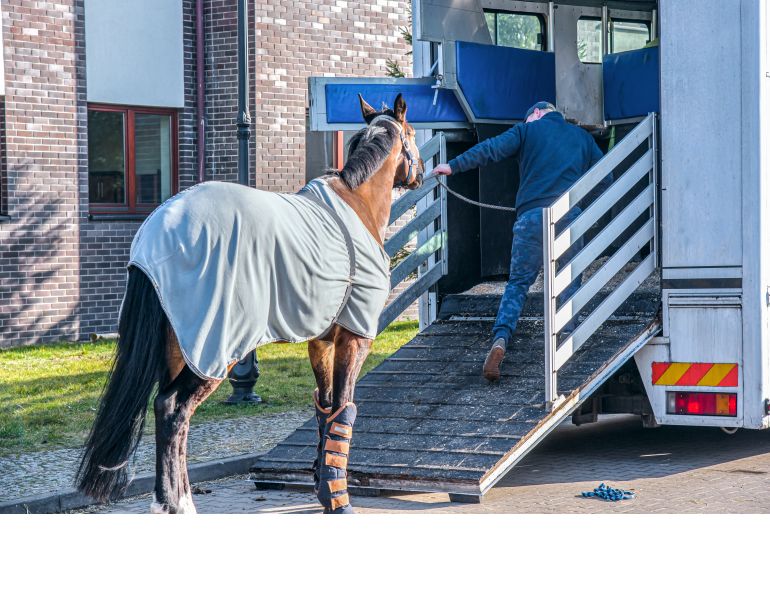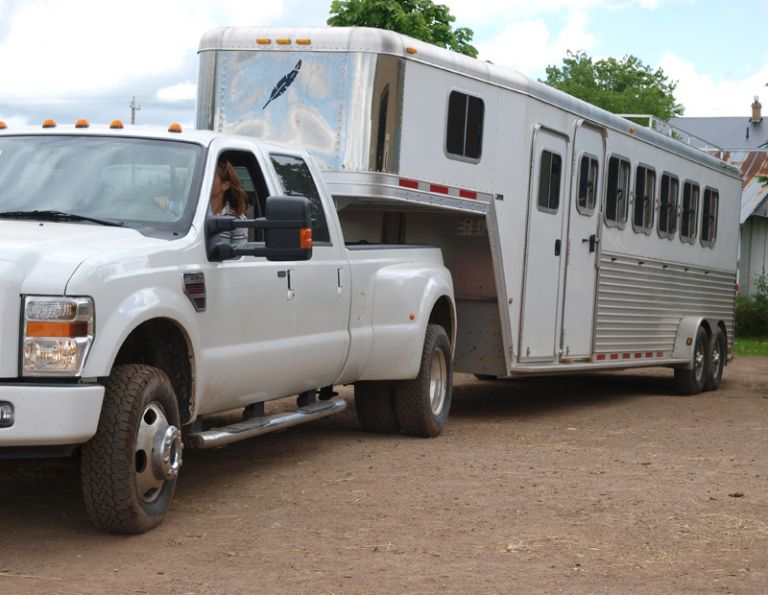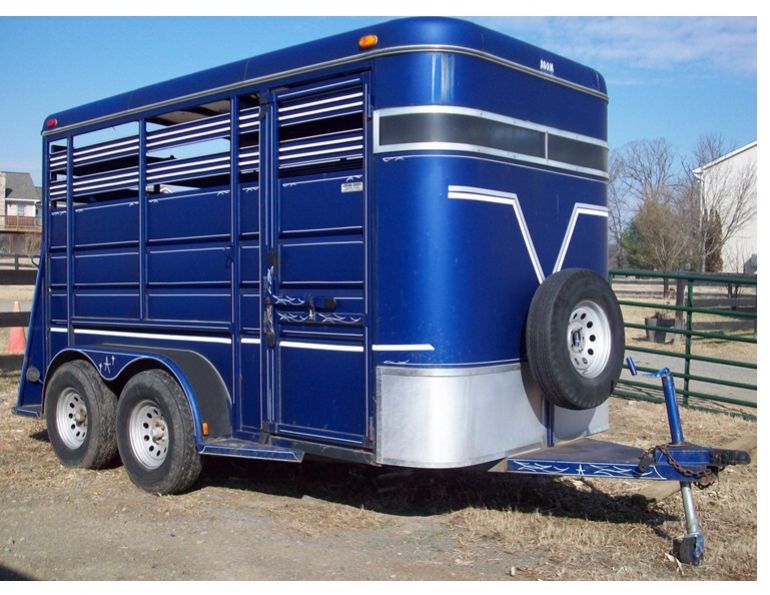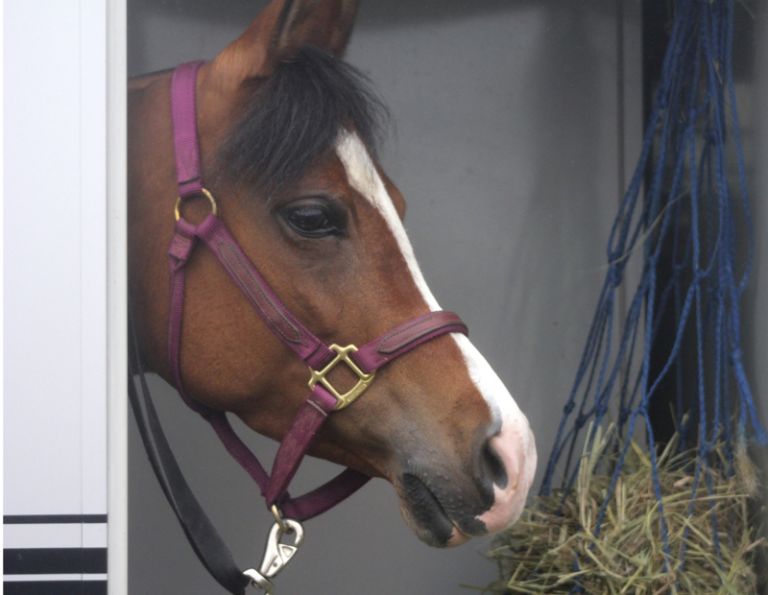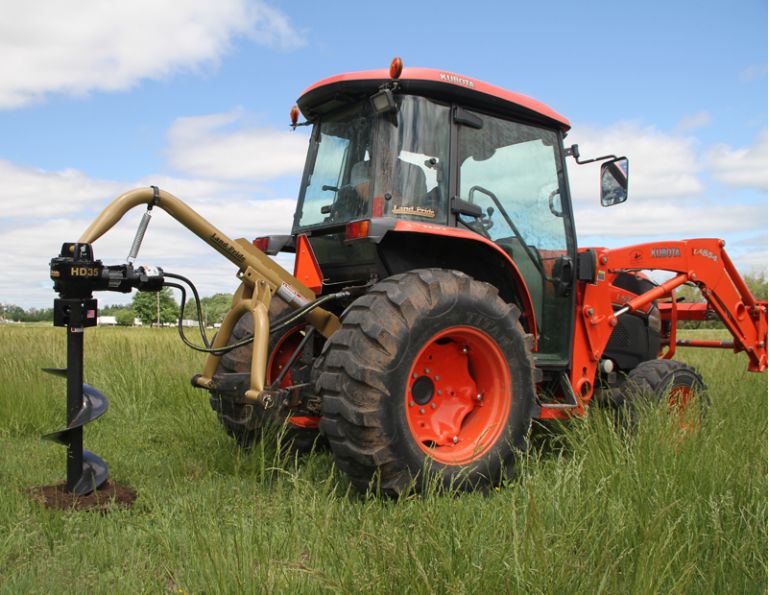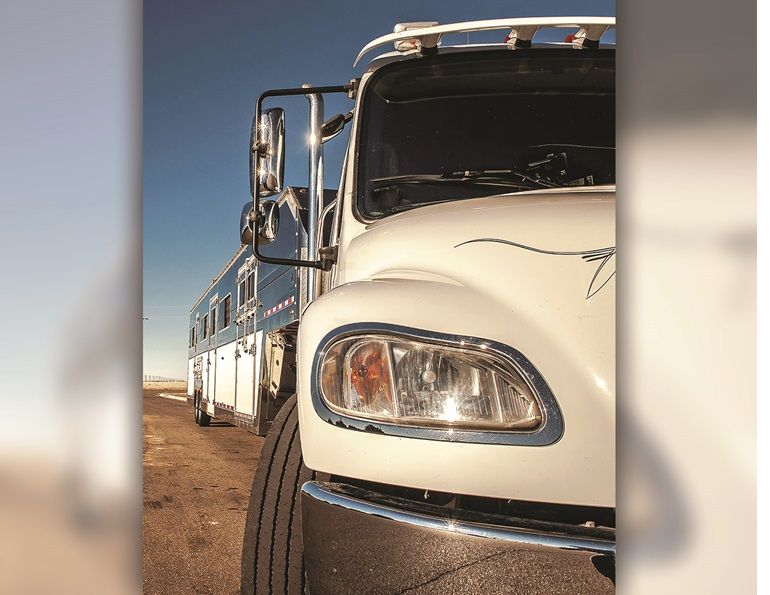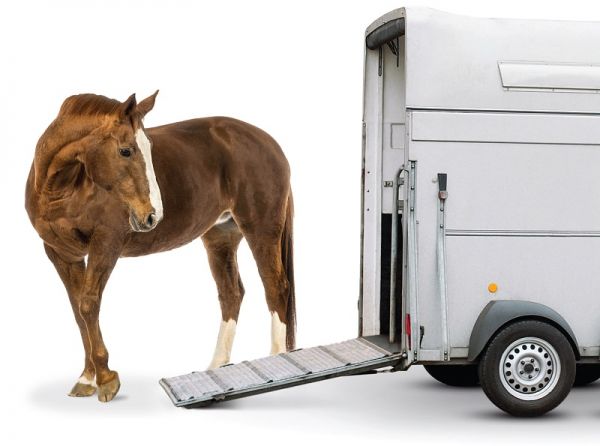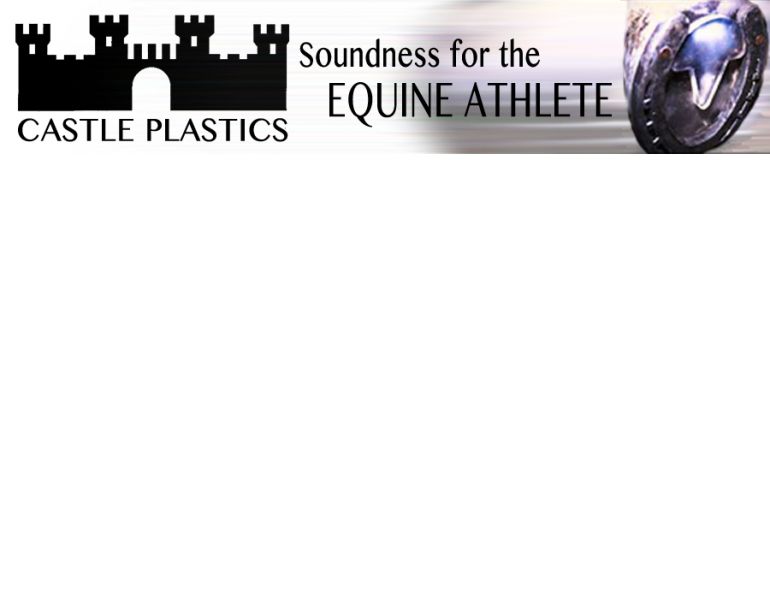By Kevan Garecki
I’ve been asked to attend a number of crashes involving horse trailers over the years, and doing so has convinced me that, aside from colic and barn fires, a motor vehicle accident involving horses is probably one of my greatest fears. The need for safe driving should always be preeminent, even more so when we have precious cargo on board. Keep in mind that there is nothing in a horse’s instinctual response mechanism that will help him in the event of a crash; this makes us wholly responsible for our horses’ welfare.
I believe that prevention and preparation are the two best approaches when it comes to avoiding emergencies. We can mitigate damage and even save lives by using a few simple precautions.
Related: Emergency Preparedness for Horses
First of all, do not cut corners when it comes to trailer repairs and maintenance. I remember coming upon one incident that was among the most grisly scenes I’ve ever encountered. An owner was transporting a mare and her foal in a two-horse trailer which had the divider removed. The trailer was rather old, with the expected shortcuts in repair, one of which included a patch job done on the floor matting. The rubber matting had worn away at the back and the owner had replaced it with a strip of conveyor belting, which had curled up at the edges. As the rig negotiated a long bridge on a very busy freeway, the mare became agitated and began to paw, lifting up the replacement matting. This in turn caused it to flip up against her belly, to which she reacted predictably: by thinking something was underneath her belly trying to eat her. She panicked, lost her balance, and fell over, all while the driver was still on the bridge. I had come up behind the rig and watched helplessly as this scene unfolded in front of me. By the time we got off the bridge, the mare had kicked through a side wall, lacerating her left hind leg so severely that she had to be put down. She also fell on top of her baby, killing him almost instantly. That cheap repair turned out to be not such a good deal after all.
In researching this article I was mildly surprised to learn that the biggest contributor to crashes involving horse trailers is speed – and not that of “the other guy,” but of the person pulling the horse trailer! The dynamics surrounding trailering really aren’t all that mystifying, but there are a few points that we need to always keep in mind. When the weight of a moving vehicle is doubled, the distance it takes to stop is doubled. When the speed of a vehicle is doubled, the stopping distance is quadrupled. When both the speed and weight are doubled, it will take at least eight times longer to stop. Cornering, changing lanes, stopping, and accelerating are all altered when we hook up to that trailer. While we may get used to these changes, “the other guy” may not have the slightest clue about what we need.
Motorists seldom have any idea about what we encounter when transporting horses. They don’t realise we need to slow down more gradually, take curves and turns with greater care, and are unable to speed away from stops like they can. The best piece of advice I can offer is to concentrate on your horses and let the traffic take a back seat. I am not entirely ignorant of the traffic behind me when hauling, but they are of less importance to me than the horses whose lives I am responsible for.
Related: How to Choose a Commercial Horse Hauler
Great exposure to risk also occurs while loading and unloading. Constant practice at walking your horse calmly and quietly on and off the trailer is the best way to minimize that risk.
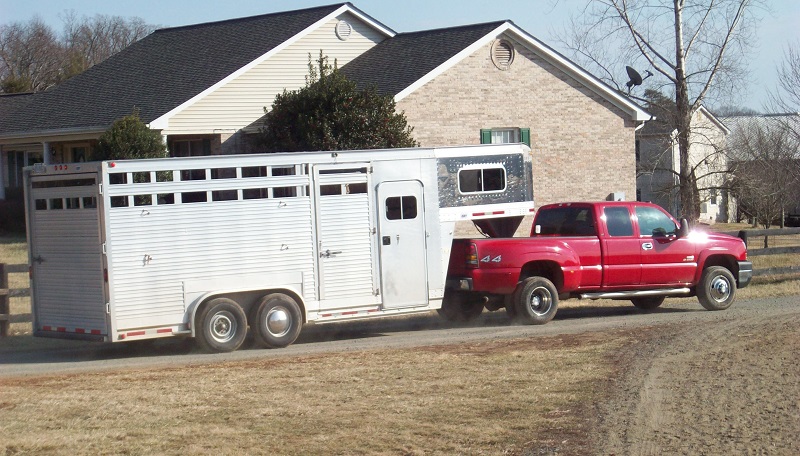
A pre-trip safety check of tow vehicle and trailer should always be performed before hitting the road with your horse. Just before you leave, check that all doors and windows are closed and securely latched.
Two of the other most common contributors to trailering incidents are improper coupling and unsafe or inoperable braking mechanisms. The simplest way to reduce your risk of an accident while trailering is to perform a basic safety check before hitting the road. Is the hitch coupled securely? Are the electrical cable, breakaway cord, and safety chains securely fastened? Is the trailer loaded correctly (weight balanced, static loads such as hay secured, doors and windows closed and latched, etc.)? Have you checked the tires, lights, and mirrors, and tested the braking systems on both tow vehicle and trailer?
If you have to pull over for any reason, take a moment to survey the road in both directions for potential hazards. Avoid stopping near the crest of a hill, near a curve, or any place where you are not clearly visible for at least half a kilometre. Make every effort to get the rig well off the road, but if you must stop on the side of the road, get as far away as possible from the regularly traveled portion of the roadway. If you cannot move the rig (breakdown, flat tire, etc.) place warning reflectors or flares out as soon as possible. Traffic approaching from behind may have to move into the oncoming lanes to avoid you, so consider vehicles coming from both directions. Always be aware of all potential hazards.
In any motor vehicle incident, see to injuries first, see to the vehicles next, and then try to minimize the effect on the rest of the traffic. If you can move the vehicles safely then do so as soon as possible. If the scene is a potential traffic hazard, then get reflectors out to warn oncoming traffic.
Call the police as soon as possible if the incident has immobilized any of the vehicles involved, or if there are any injuries.
Related: Transporting the Special Needs Horse
Emergency response personnel (police, fire department, etc.) have legal domain over crash scenes, so always follow their orders. Here are a few points that may make things a bit easier on the horses:
- If you have to call 911 to report an incident involving animals, advise of the location, status of the animals, condition of the vehicles and persons involved, and also advise of any potential hazards, such as loose animals, stallions or aggressive horses on board, injured horses, or those with special needs such as nursing mares, etc. Ask the dispatcher to advise responders to approach the scene with emergency lights and sirens off.
- If the trailer is upright, tend to the horses in a calm and orderly fashion. If they are safe inside the trailer, DO NOT unload them!
- If the horses are loose, quietly herd them to a safe area as far away from traffic as is practical. If they find a relatively safe spot to graze, leave them there until alternate transport arrives.
- If the trailer has overturned or the horses cannot be safely unloaded in a conventional manner, leave them be until the responders arrive. You will need all the help you can get to prevent further injury to them.
- If any of the horses have suffered injuries, contact the nearest veterinarian and ask if they can attend the scene if injuries are severe. Callout fees can be expensive but vet bills tend to be a lot cheaper than horses.
- NEVER enter an overturned trailer alone when there are horses on board! Frightened horses will most often act instinctively and even well trained and trusted animals can react unexpectedly in a crisis situation. Thanks to the efforts of people like Jennifer Woods of Reflected J Consulting, many first responders have received highly specialized training in extracting animals from wrecks. They are professionals with the knowledge of what to do, and more importantly, what not to do.
- Above all, keep as calm as you can muster. Do not run and do not yell, as adrenaline will cloud your thinking. In addition, remember that the horses will likely be upset too. They need you to convince them that everything is okay, and since horses will mirror your demeanor, you can best accomplish this by staying calm.
We don’t like to think about this, but in any crash there is a very real possibility of our being injured and unable to direct or inform responders. Keeping a list of horses’ names and descriptions can help responders sort out who’s who. Adding your veterinarian’s contact information and that of an emergency contact at home will assist others in helping the horses. Keep the list in a place easy for responders to find, such as your wallet or purse. Don’t leave it loose in the tow vehicle, as it could easily become lost.
Related: What To Do in Remote Emergencies with Horses
Here’s a little piece of hard-earned wisdom about crash scenes: Take notes, exchange license and vehicle information, then shut up! Offer details and statements to the police only. Give only your full name, driver’s license number, vehicle registration number, and plate number to others involved in the crash. Under no circumstances should you hand your license to the other driver to allow him or her to copy any information from it. Think about it; your address is on there. Read the numbers off to the other party without handing it over to them. The same rule applies for vehicle registration papers.
After the obligatory exchange of information is complete, go back to taking notes, taking pictures, caring for the horses, or whatever else you deem necessary. Liability comes in many guises, and the utterances made at a crash scene are an open invitation to litigation. Anything you say at the scene of an accident can and will be stuffed down your throat if it ends up in court. Pictures, notes, diagrams, and any other material evidence gathered at the scene are admissible in a courtroom, and may supersede any such information collected afterwards. Police know this, which is why they collect as much data at the scene as possible. Statements made at the scene can be taken in favour of formal ones taken afterwards. An innocent remark can spin the truth completely out of control, with disastrous personal and financial consequences.
A recent crash near Kalamazoo, Michigan, offers some hints for increasing safety while trailering our beloved horses. A young woman was trailering her horse to a nearby event when her rig suddenly fishtailed on black ice. When relating her story, she noted that the trailer hit the back of the truck, then became detached and continued down the road until it came to rest upside down in the ditch. Amazingly, her horse received only superficial wounds and, with the help of experienced responders, emerged from the wreck to nuzzle her owner. Three things came to my mind as this story unfolded: how quickly the driver lost control; the fact that the truck and trailer separated; and that the horse suffered very little injury. If truck and horse trailer are properly hitched, they should not detach; it’s as simple as that. I’ve seen far more severe wrecks involving more weight, faster speeds, and rougher ground than this incident occurred on, all without separation. Weight distribution was a major contributing factor to the severity of the incident; the horse was directly over the trailer wheels, in the second stall in the three-horse trailer. This placed too much weight over the trailer axles, and not enough on the hitch. This would have made recovering from even the slightest loss of traction nearly impossible. What quite likely saved that horse’s life was the fact that she was not tied while on board. When the trailer overturned, the mare was able to right herself without being restrained.
The lessons in this story are common, but bear repeating:
- Take whatever time necessary to double check the trailer is properly and securely hooked up.
- Loading the trailer improperly can turn even the slightest “oops” into a disaster. When loading any trailer, the weight should be distributed in such a way as to place 60 percent ahead of the trailer wheels, with the remaining 40 percent behind the trailer wheels. This offers the most stable situation possible.
- Road conditions can change in a heartbeat, especially in winter. Adjust speed according to conditions, and if conditions deteriorate, the best option may be to delay the trip until the weather improves.
Preparation is the key to accident prevention. It only takes a minute to double check that the trailer is properly hitched, or to load the trailer correctly, and it only takes a minute for even a few seemingly minor discordant items to compound into a disaster... but it may take a lifetime to forget what happens next.
Related: How to Haul a Horse Safely
Related: How to Check Your Horse's Vital Signs
Main photo: When transporting horses you have a responsibility to take as many precautions as possible to ensure their safety and well-being. Credit: Robin Duncan Photography



